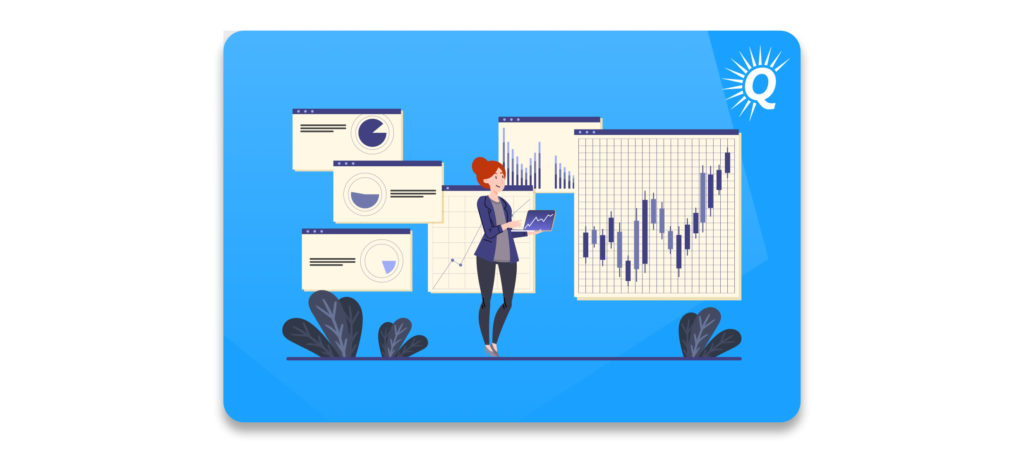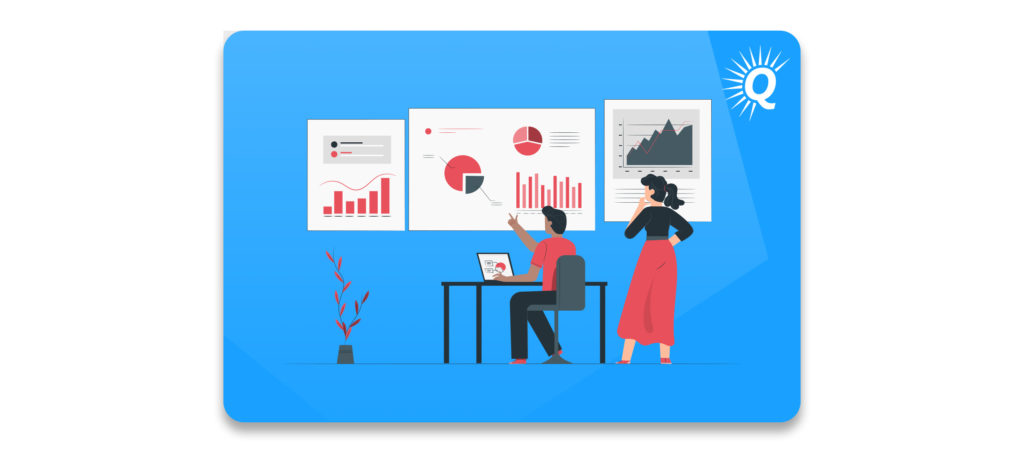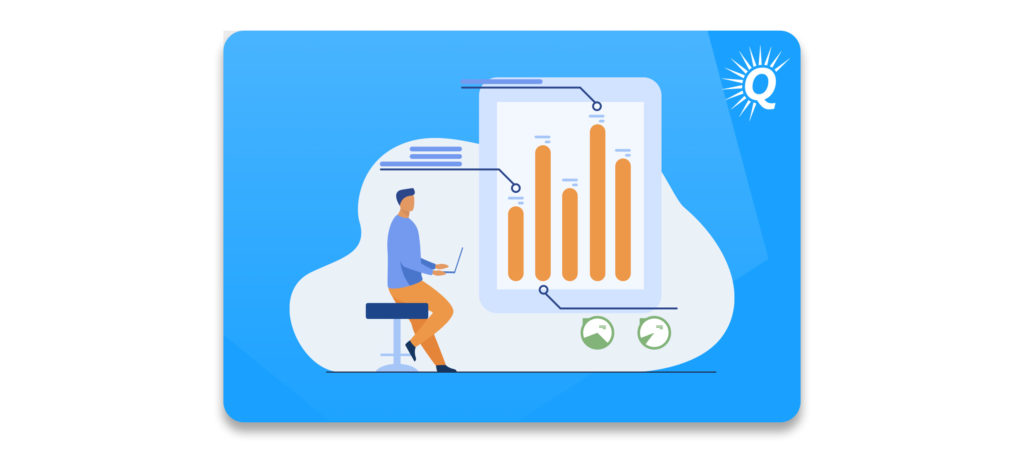Topics:
Never Miss a Beat - Get Updates Direct to Your Inbox
FILTER:


Key SaaS Metrics To Pay Attention To
By Lauren Winigrad
Whether you are currently a SaaS business owner or are considering purchasing a SaaS or MSP company, understanding SaaS metrics is crucial to making informed and educated business decisions.
This enables you to recognize strengths, mitigate risks, and identify potential opportunities.
If you are considering purchasing a SaaS or MSP company, it’s essential that you have an understanding of SaaS metrics. Knowing what data to look at will help you avoid risky companies and land better deals.


This article will:
- List key SaaS metrics to pay attention to
- Discuss strategies for identifying opportunities when purchasing a SaaS business
- Highlight best practices and tools for evaluating a SaaS business
Key SaaS Metrics
Knowing which SaaS or MSP marketing metrics to evaluate will help you gain a better understanding of how SaaS works. In addition, it will help you evaluate the performance of a given SaaS business, whether it be your own or a business that you are considering purchasing. Below we will discuss some of the key SaaS metrics to be aware of.
MRR and ARR
MRR stands for Monthly Recurring Revenue. As its name implies, the MRR is a measure of the revenue that the company receives on a recurring monthly basis. Since a SaaS company is a subscription business, the MRR is the lifeblood of a SaaS business. A strong monthly recurring revenue can tell you a lot about the health of a SaaS company.


In addition, MRR will have a large impact on SaaS valuation since valuations use a multiple of the seller’s discretionary earnings. For large SaaS companies, SaaS valuation uses a revenue multiple.
Some SaaS businesses use Annual Recurring Revenue, or ARR, instead of MRR. The choice between which to use often comes down to whether you’re billing customers monthly or annually.
Customer Acquisition Cost
CAC stands for Customer Acquisition Cost and represents one of the key growth metrics. This represents the average amount of money that a SaaS business spends on acquiring one new customer. To calculate Customer Acquisition Cost you start by taking the total cost of marketing and sales for a given period. Then, you divide it by the total number of new customers acquired in the same period.
As a general rule, it’s best if your CAC is recovered in less than 12 months.
Averege Revenue per Customer
The ARC, or Average Revenue per Customer, is one of the key sales metrics used to calculate the overall revenue from each existing customer. To calculate ARC, you divide the total revenue by the number of active customers in a given time period.
Customer LifetimeSaa Value
The Customer Lifetime Value, or LTV, denotes the overall value that a given customer provides to the company over the course of their entire relationship with the business. It’s calculated by subtracting acquisition cost from the total revenue that that customer generates
Regardless of what method you use to calculate churn, the goal of every SaaS business is to keep the churn rate as low as possible. For example, knowing the LTV can help a business owner understand the maximum CAC that would allow profitability. Additionally, it can provide insights regarding customer retention rates.
In short, a SaaS business desires to have high-value customers for a long period of time, increasing the LTV.
Churn
As a subscription-based business model, SaaS and MSP companies need to pay close attention to their customer churn rate. Some experts maintain that the churn rate is the most important and often least understood metric.


The customer churn rate is the number of customers who leave in a given time period divided by the total number of remaining customers.
A different method to measure churn is to look at the lost revenue that a company experiences due to customer loss. This is often referred to as revenue churn or MRR churn.
The Importance of Maintaining a Good Churn Rate
Even if a company excells at customer acquisition, it will struggle to remain profitable if it has high churn. Having a low churn rate is necessary in order to have any significant growth rate in the business. From the perspective of a SaaS business owner, maintaining a low churn rate is crucial to success.
Buy a Profitable Online Business
Outsmart the startup game and check out our listings. You can request a summary on any business without any further obligation.
While the concept of churn is fairly straightforward, there are many different ways to actually calculate churn. In fact, according to ProfitWell, there are 43 different methods of calculating churn.
These differences arise from various ways of defining when a customer is actually lost, what constitutes a customer, and how you define total customers, among other things. In addition, it is important to note whether you are talking about revenue churn or customer churn. We won’t go into the different methods for calculating churn in this article. However, it is important to pay attention to the specific methods used when evaluating the health of a potential SaaS or MSP business to purchase.
Regardless of which method you use, breaking down the Customer Lifetime Value of a SaaS business can help with efficient long-term forecasting, marketing, and planning for the company. Furthermore, the holy grail of any subscription-based business is negative net churn. With negative net churn, the gains in revenue from new customers or upsells to existing customers outweigh the revenue lost from customers leaving.
What Is a Good Churn Rate?
When it comes to SaaS and MSP businesses, churn rates can vary greatly. For much larger companies, monthly churn rates can be as low as .5%-1%. However, smaller SaaS companies or those that are just starting out can often have a churn rate of 3%-7%. In general, the goal should be to have a churn rate in the single digits, ideally as low as possible. If the churn rate creeps up into the double digits, it is a sign that the product or customer service may not be working properly.
Reducing Churn
Given how important a low churn rate is, SaaS and MSP business owners are often interested in learning how they can reduce churn. In addition, if you are considering purchasing a SaaS business, recognizing easy areas to reduce churn will help you identify opportunities to realize revenue growth after purchase.


People will often cancel a subscription if they are unhappy with the product or they don’t have the customer services that they require in order to fully realize the benefits of the product. In other words, churn is often a reflection of customer satisfaction.
As such, improving the customer onboarding process and providing stellar customer service tools can go a long way in reducing churn.
In addition, customers who are only using a small portion of the service that they purchased often cancel. As a result, providing ample education for your customers is crucial to allow them to drive customer engagement and make full use of the products, reducing churn in the process.
Revenue Profile
Revenue profile refers to the sources of revenue that a given business generates, and the timeframe for earning that revenue. From the perspective of a person looking to purchase a SaaS business, paying attention to the revenue profile is crucial to accurately evaluate the business.
For example, monthly recurring revenue is quite a bit less risky than annually recurring revenue. This is due to the fact that it’s more predictable. As such, all things being equal, a SaaS business that bills customers monthly will be more valuable than a SaaS business that bills customers annually.
In addition, as a buyer, you should be wary of business owners who attempt to artificially increase their revenue prior to selling by offering discounts, pushing annual plans, or offering lifetime plans.
Acquisition Channels
Another aspect for both business owners and potential purchasers to pay attention to is acquisition channels. Like the revenue profile of a business, the makeup of customer acquisition channels will have a large influence on the risk of a given company. With greater risk comes reduced value, and vice versa.


An acquisition channel is a method that a business uses to acquire new customers. This could include traffic or social media marketing, among others. As a rule, a company that has a diverse set of customer acquisition channels incurs less risk than a company that relies on only one or two main customer acquisition channels.
In addition, it is important to keep in mind that the cost to acquire a new customer goes up in proportion to the competition faced within that industry and channel. As such, it is preferable to occupy a less crowded industry with relatively low competition in common acquisition channels. A company of this nature will often be more attractive than a company that faces stiff competition for growth.
Identifying Opportunities
For those looking into buying a SaaS business, it is absolutely crucial to properly analyze the key metrics of each company. However, it is also important to know what to look for in more general terms. By purchasing a company in the right stage of its growth cycle, you can realize large returns on your investment.
Micro-SaaS
There are SaaS businesses of all different types and sizes, filling many different industries. Over the years, a lot of attention and focus in the industry has centered on the leading SaaS companies. These companies are often large VC-backed SaaS startups. However, a more often overlooked opportunity lies in Micro-SaaS companies.
As its name implies, a Micro-SaaS company is a small SaaS company, often filling a specific niche or focused on solving a specific problem. Micro-SaaS companies are often founded by enterprising software engineers and bootstrapped into existence by a small and hardworking team.
Recognizing Micro-SaaS
For those looking to purchase a SaaS company with rapid growth in mind, it is helpful to know how to recognize a Micro-SaaS company. Micro-SaaS companies often:
- Are not backed by VCs
- Have slower growth
- Are not pushing for a revenue multiple exit
- Have a solid architecture in place


According to SaaS guru David Newell, Micro-SaaS companies are often happy with a slower growth model. Their engineer founders often focus on solving problems rather than maximizing sales and marketing efforts and are happy to grow their businesses organically.
Why Micro-SaaS
The characteristics that define a Micro-SaaS company also help to make it an attractive investment opportunity for the right entrepreneur. In the hands of a skilled software engineer (or small team of engineers), the right Micro-SaaS company will have a solid architecture and product built out. This alone represents a ton of hours poured into perfecting the product.
In addition, many Micro-SaaS companies with modest customer acquisition have proved that they have a successful product-market fit. This means that they have demonstrated that they have a useful product and that there is a market that has a need for their product. Unlike a physical products business, this alone could take months of effort to prove for a SaaS company of any size.
However, many Micro-SaaS companies neglect to spend any significant effort in ramping up their sales and marketing efforts. Too often, a micro-SaaS business builds a technically sound product with proven demand but fails to make any significant effort to sell the product.
For the right entrepreneur with the appropriate marketing and sales skills, it is easy to see why purchasing a Micro-SaaS company could represent an opportunity. With expertise and effort, a newly purchased Micro-SaaS company can rapidly expand its customer base and increase its revenues. For this reason, purchasing the right Micro-SaaS company can often lead to a large return on investment.
Evaluating a SaaS Business
Whether you are a current SaaS company owner or are purchasing your first SaaS business in the global SaaS market, knowing what to look for when evaluating a SaaS business is crucial.


As an owner, it can allow you to identify and mitigate weaknesses, capitalize on hidden opportunities, and maximize your SaaS marketing efforts now and into the future. As a buyer, properly evaluating each SaaS company under consideration will help you make an informed decision.
What to Look For
There are several general aspects to pay attention to when evaluating a SaaS business. Many of these aspects also apply to other business models as well, while some are more specific to SaaS companies. Key aspects to evaluate include:
- Organization and financial statements
- Sales and marketing efficiency metrics
- Data presentation methods
- Cash balance
Below we’ll provide an overview of each of these topics.
Organization and Financial Statements
This is one of the first things that should be evaluated in a business, regardless of which type of business it is. It is important to note whether or not the business in question has a clear and concise accounting and documentation system.
In addition to making it easier to comb through relevant key performance information, organized financial statements and clear documentation helps to instill confidence that the business is a well-run enterprise.
If you are a SaaS business owner and you know that your accounting methods and documentation systems are subpar, this could be an area to focus your improvement efforts. By taking some time to clean up your books, you can eliminate inefficiency as you run your business. Additionally, it can help you increase the value of your business and be in a better position for an exit should you decide to sell.
Sales and Marketing Efficiency Metrics
This goes back to the metrics that we discussed earlier. Essentially, you want to thoroughly examine the MRR, churn rates, CAC, LTV, and other key metrics. By doing so, you can:
- Get a better idea of how efficient the business is at obtaining new customers (sales efficiency and sales process)
- Learn how well a company keeps its customers (or customer retention rate)
- Determine costs associated with ensuring customer satisfaction


These metrics should be examined in light of each different product line that the company has. That way, you will be able to examine exactly where the revenue is coming from, which products perform the best, and which ones may need improvements or be eliminated.
Again, this information is helpful for both current SaaS business owners as well as prospective buyers. Depending on which you are, it will either help you run your business more effectively or help you choose a strong and healthy business to purchase.
How The Data Is Presented
As we mentioned earlier, there are often many different ways to calculate each key performance metric. While there is no one right way or wrong way, the method that is used to calculate the metrics does have an impact on the overall story that they tell. One method may be right for one type of SaaS business, and another method might be more appropriate for another type.
As a potential buyer, it is important to be informed about the different methods of calculation and make sure that a business is presenting its information in the most appropriate and accurate way possible.


As a business owner, be sure to use the most appropriate methods for presenting your business data. Never try to change the narrative or skew the numbers by selecting a more expedient but less effective method of calculating your key performance indicators. In addition to just being the wrong thing to do, most worthwhile buyers will quickly see through the situation.
Cash Balance
This one may be obvious, but it is still worth mentioning. As a buyer, pay attention to the cash balance that any prospective SaaS company has. If they are funding their growth through debt, take note of this fact as a red flag. Ideally, you want to buy a company with healthy books.
Tools
As we have seen, there is a mountain of data to sift through when evaluating any SaaS business. For that reason, it is a good idea to have the right tools to help you in that process. Fortunately, a host of useful tools have been created for those in the SaaS world. Some of these include:
Each of these tools has its own SaaS metrics dashboard with which to view the relevant metrics. In addition, each has its own set of strengths. Baremetrics is highly useful as it allows you to see how well other similar companies are performing on key metrics. This allows you to gain an understanding of what a successful benchmark is for your own company, or a company that you are considering purchasing.
Thinking of Selling Your Business?
Get a free, individually-tailored valuation and business-readiness assessment. Sell when you're ready. Not a minute before.
Regardless of which tools you choose, it is important to pick one that feels easy to use. In addition, remember to keep things standardized. If you are constantly shifting data sources or methods, the information that you gather will be useless.
Conclusion
Jumping into the world of SaaS metrics can be a daunting task at first glance. However, with the right knowledge, you can quickly become adept at identifying and evaluating each key metric that will allow you to perceive the strengths and weaknesses of a given business.
Whether you are a SaaS business owner looking to optimize and improve your company or are considering purchasing a SaaS business of your own, taking the time to familiarize yourself with the inner workings of SaaS businesses will allow you to make informed and educated business decisions.





